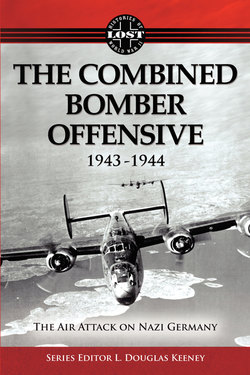Читать книгу The Combined Bomber Offensive 1943 - 1944: The Air Attack on Nazi Germany - L. Douglas Keeney - Страница 6
На сайте Литреса книга снята с продажи.
The Report of the Committee of Operations Analysts
ОглавлениеThe target selection in the Casablanca directive was not, however, much different from nor perhaps any better than that in the earlier planning. The thing that had been lacking in all this planning was a thorough study of the enemy economy by a single agency, such a unified analysis being necessary for the proper selection of strategic objectives. This phase of planning had developed its own principles and techniques, which involved a detailed knowledge of the enemy’s productive system and a careful balancing of economic and military factors; but no agency had been created to apply these techniques in preparing a comprehensive report.
Not all of the intelligence of the enemy necessary for target selection can be obtained directly by an air force or a bomber command. Such intelligence is obtained by many regular and special governmental agencies and by a variety of individual experts. Its sources are as varied as its collectors. Aerial reconnaissance photographs, ground reports, captured weapons, interrogations of refugees and prisoners of war, current and prewar enemy technical publications, the prewar experience of Allied technical experts abroad, our own production practices and Allied data on bombing effectiveness are but some of the courses used in making a selection of targets for strategic bombing.
Before industrial systems can be ranked in target priority a number of economic and military criteria must be applied. Most important, perhaps, is the military use of the products of a system. Some of the economic factors which must be considered are the depth of an industry (measured by the time required to get products from industry to the front line), the cushion (idle capacity that can be brought into production), the reserve stocks, the attrition rate, the existence of substitutes, the possibility of exercising economics, and the ability of an industry to recuperate.
Military factors relating to the vulnerability of targets and the capabilities of the attacking air force must be applied. The structural characteristics and concentration of buildings, their susceptibility to various types of munitions, the dispersal of plants, and distances from bases all govern the possible destruction of a telling fraction of an industry by an air force.
The appointment of a body to make the analysis of German economy that was necessary before further progress in target selection could be achieved was made on 9 December 1943 by the Commanding General of the Army Air Forces. This body, known as the Committee of Operations Analysts (COA) and placed under the direction of the Assistant Chief of the Air Staff, Management Control, was instructed to submit a report which would show the rate of deterioration of the German war effort that would result from air operations and which would indicate an approximate date when invasion of the Continent would be possible. This was the body that filled the gap that had existed in the strategical planning before 1943 by making a thorough-going study of German economy upon which a dependable choice of target systems might rest.
The first meeting of the Committee of Operations Analysts was held on 10 December, and it immediately went to work with the appointment of subcommittees to study enemy industrial systems.
Although it was desired that the committee submit a report before the Casablanca Conference, that could not be accomplished in the time available. An interim report was submitted on 23 December 1943 in which the committee’s methods and courses of intelligence were described and in which the principle of concentration of effort was stated thus: “ … it is better to cause a high degree of destruction in a few really essential industries or services than to cause a small decrease of destruction in many industries.”
The next few months were spent in the study of various target systems. Assistance was given by A-3, G-2, the Board of Economic Warfare, the Office of Strategic Services, the War Production Board, and certain other government agencies and experts in private industry. Certain members of the committee went to England where methods and materials were reviewed with the Eighth Air Force, the Royal Air Force, the Air Ministry, and the Ministry of Economic Warfare.
The final report of the OCA was submitted on 6 March 1943. The over-all results of the researcher of the various subcommittees were presented in a bound volume which surprised data on 10 different German industrial systems – all that appeared to have bombardment significance. Under a separate tab the various production units in each system were listed. The distance of each unit from London and its percentage of total axis production were set forth. For security reasons the committee did not rank the 19 systems in order of priority, but it did announce a set of principles of strategic selection which apparently constitute one of its chief contributions to the planning chase of this type of warfare.
Although the report did not recommend definite target priorities or find it possible at the time to forecast a date on which invasion would be possible, it did arrive at two important conclusions:
1 The destruction and continued neutralization of some sixty targets would gravely impair and might paralyze the Western Axis war effort.
2 In view of the ability of adequate and properly utilized air power to impair the industrial sources of the enemy’s military strength, only the most vital considerations should be permitted to delay or divert the application of an adequate striking force to this task.
